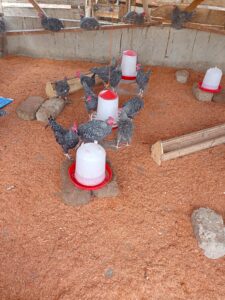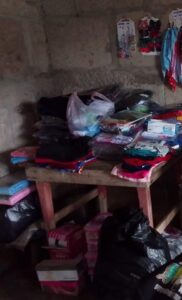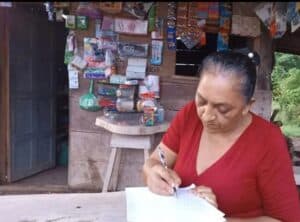Implementing New Field Techniques in Nicaragua
 Mario Eugenio Hernández is from the community of El Tamboral Sur, a municipality of San Miguelito, and is currently the leader of 17 farmers in that community.
Mario Eugenio Hernández is from the community of El Tamboral Sur, a municipality of San Miguelito, and is currently the leader of 17 farmers in that community.
Hernández recently shared his experience with the Self-Help International staff. He said, “This is the first time I have seen the double row technique using the INTA Nutrader corn variety. The experimental plot that I established was well cared for and the variety seemed excellent to me. The plant is small and it adapts to different climatic conditions.”
As a farmer, Hernández first prepared the land by removing all the weeds. He explained, “I did not apply any fertilizer. I just kept cleaning the corn to keep it free of weeds and the results obtained were unbelievable.”
Many other farmers in his community did not have much confidence in the double row planting system that was taught by the Self-Help technician. However, Hernández soon saw a big difference between the new technique and traditional planting methods.”I noticed a change in the growing stage and the yields were better so we now can accept that the technique has very good results. This type of corn has a sweet flavor and is desired by the children. Tortillas have a very good taste and the family liked it so much that my wife and children did not want to eat the other variety of corn. I was upset because they were not going to let me save seeds to plant the next planting season,” he said.
At the end of harvest, Hernández estimated that one manzana of this type of corn with the double row technique yields 72 QQ which is double compared to just 30 QQs per manzana using the old method.
Hernández encourages other farmers to implement the double row technique and to use the INTA – Nutrader corn because it helps improve yields, provides a higher percentage of proteins, and it is suitable for the area with limited land resources. He commented, “With this plot experiment, we have realized that this variety of corn produces cobs without the need to apply any fertilizer which is helpful because fertilizer is difficult to obtain due to the distance of the agriservice and the expensive prices to buy agrochemical products. I want to thanks the Self-Help organization for provided us with the skill and knowledge through training to continue to improve the yields in the rural sector in Nicaragua.”
He also invites other farmers to continue using this planting technique since the results are very good as long as farmers follow the precise management necessary during the different stages of the plant. Hernández added, “This type of corn incorporates vitamins and minerals into our diet, necessary for the growth and development of growing children, through the basic grains that the organization donates to different families in the agricultural sector. I will continue working hand in hand with the organization to continue improving our planting techniques and acquiring more knowledge and technologies that help us improving our production.”




